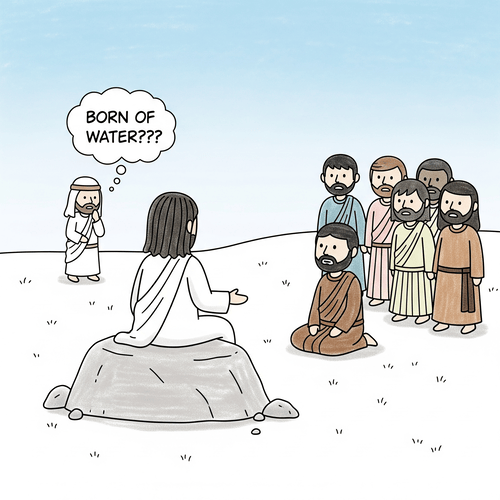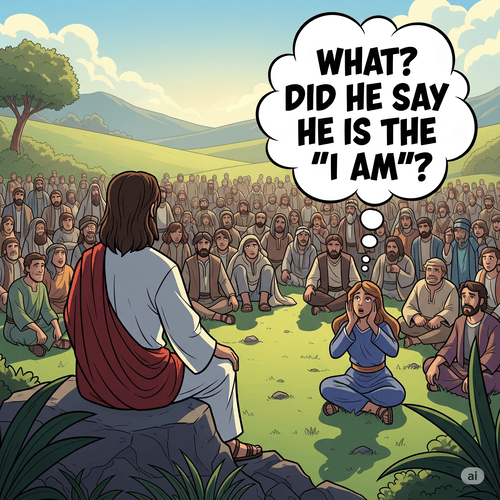The Racial Diversity Question: Does the Bible Have Answers?
Walk into any bustling metropolis today and you’ll likely witness humanity’s breathtaking diversity—the deep ebony skin of a Sudanese family, the olive complexion of Mediterranean tourists, the pale features of Scandinavian visitors, the distinctive features of East Asians hurrying to work. This beautiful tapestry of human variation raises a question both believers and sceptics ask: If the Bible is true about human origins—if we really all descended from Adam and Eve, and later from Noah’s family—how do we account for such dramatic racial differences?
Critics argue the racial diversity question proves the biblical account false, claiming it would take evolutionary timescales and multiple human origins to produce such variation. But what if the opposite is true? What if modern science actually confirms the biblical narrative while revealing God’s remarkable design for human diversity?
THE BIBLICAL FOUNDATION: UNITY AND DISPERSION
Scripture speaks with crystal clarity about human origins.
Unity of Human Origin: In Acts 17:26, Paul declares God “made from one man every nation of mankind to live on all the face of the earth.” This wasn’t ancient speculation—it was apostolic truth rooted in Genesis. When God created humanity in His image (Genesis 1:27), He established one human family, not multiple races with separate origins.
Dispersion and Diversification: The biblical timeline provides a clear framework: after the global flood, all humanity descended from Noah’s family. Genesis 10 traces how his sons’ descendants spread across the earth, while Genesis 11 describes how God confused human language at Babel, scattering people groups across the globe. This divine dispersion wasn’t random—it was purposeful, setting the stage for the beautiful diversity we see today.
Scripture affirms this unity. Adam’s federal headship means all humanity shares not only common ancestry but also common spiritual heritage—both in the fall and in redemption. Physical differences, however striking, are superficial compared to this profound spiritual unity.
THE RACIAL DIVERSITY QUESTION: SCIENCE CONFIRMS SCRIPTURE
Modern genetics provides powerful confirmation of the biblical account rather than contradicting it. Three key genetic realities align perfectly with Scripture’s teaching about recent common ancestry:
Our Common Ancestry: Studies of mitochondrial DNA and Y-chromosome patterns point to common ancestors that scientists call “mitochondrial Eve” and “Y-chromosome Adam.” These genetic markers indicate all humans descended from recent common ancestors, exactly as Scripture teaches. Humanity shares 99.9% identical DNA regardless of race, with greater genetic diversity often existing within racial groups than between them. A Kenyan and a South African, for instance, may be more genetically different from each other than either is from a Swede.
Rapid Diversification is Possible: Small founding populations can rapidly develop distinct characteristics through genetic bottlenecks and founder effects. When populations become geographically isolated (as Genesis 11 describes), certain traits become amplified within just a few generations. We observe this principle today in communities like the Amish, where distinctive physical characteristics have emerged in mere centuries. Environmental pressures naturally select for traits that aid survival in specific climates and conditions.
Skin Colour and Physical Features Follow Simple Patterns: The traits we associate with race are controlled by relatively few genes, making rapid change entirely feasible. Melanin production, for example, is governed by fewer than a dozen major genes—populations can develop dramatically different skin tones within generations as they adapt to different UV levels. Height, facial features, and body proportions are similarly controlled by existing genetic variation rather than requiring millions of years to develop. Natural selection works with the genetic information already present in human populations.
GOD’S DESIGN FOR BEAUTIFUL DIVERSITY
From a Reformed perspective, this isn’t evolutionary accident—it’s divine design. God embedded within human genetics the capacity for stunning variation, then orchestrated circumstances (the Babel dispersion) to bring that potential to fruition. The result reflects His creative glory.
Revelation 7:9 gives us a glimpse of God’s ultimate purpose: “a great multitude that no one could number, from every nation, from all tribes and peoples and languages, standing before the throne.” God didn’t create diversity as an afterthought—it was part of His eternal plan. The physical and cultural variety we see today will be represented in heaven’s worship.
This perspective elevates human dignity rather than undermining it. Every race equally bears the image of God (imago Dei). Physical variation is like different instruments in an orchestra—each contributes unique beauty to a unified symphony of human existence. Reformed doctrine insists that what makes us human transcends melanin levels or facial structure.
God’s providence works through natural processes He designed. The genetic mechanisms that produce racial diversity aren’t random mutations fighting against design—they’re sophisticated systems working exactly as intended. Common grace allows all peoples to develop rich cultures and civilizations, each reflecting aspects of human creativity and God’s glory.
ADDRESSING SCEPTICS’ QUESTIONS
Two major objections are commonly raised against the biblical account of human racial diversity, but both can be addressed with evidence from genetics and history:
“There Wasn’t Enough Time for Such Changes”: Historical evidence proves dramatic physical changes can occur in isolated populations within centuries, not millennia. We have documented cases of significant adaptations happening within relatively short timeframes when populations face new environmental pressures. Epigenetic factors can produce noticeable changes within single generations as populations adapt to new climates, diets, and living conditions. Recent genetic studies actually show that human racial divergence occurred relatively recently in human history, consistent with biblical chronology rather than evolutionary timescales.
“Racial Diversity Still Requires Evolutionary Processes”: We must distinguish between microevolution (variation within kinds) and macroevolution (emergence of entirely new kinds of organisms). The biblical concept of “kinds” allows for tremendous variation within established boundaries—just as a Great Dane and Chihuahua remain the same kind despite dramatic differences. Human racial variation represents diversity within the human kind, not evolution into something fundamentally new. Natural selection works with existing genetic information rather than creating entirely new genetic material, favoring traits that aid survival in specific environments from the gene pool that already existed in early human populations.
THE RACIAL DIVERSITY QUESTION: NO CHALLENGE FOR BIBLE TRUTH
The Genesis account doesn’t merely accommodate human racial diversity—it provides the most coherent explanation for it. Recent common ancestry explains our genetic similarity, while designed variation mechanisms explain our differences. The biblical timeline aligns with genetic evidence for recent human diversification.
Rather than undermining Scripture’s authority, modern genetics demonstrates the wisdom embedded in human design. God created one human family with the remarkable capacity to adapt and diversify, then orchestrated history to unleash that beautiful potential. The result is exactly what we’d expect from a loving Creator who delights in unity within diversity—and exactly what we see when we look around our wonderfully varied world.
The racial diversity question doesn’t challenge biblical truth—it showcases it. In human faces across the globe, we see both the unity of our common origin and the creativity of our common Designer.
THE RACIAL DIVERSITY QUESTION: RELATED FAQs
What about blood types and other genetic markers that vary by race? Blood type distributions (like higher Type B frequency in Asians) actually support the biblical model of recent dispersion from small founding populations. When small groups migrate and establish isolated communities, certain genetic variants become concentrated through founder effects. These patterns reflect genetic drift in small populations rather than ancient evolutionary divergence, perfectly consistent with post-Babel dispersion.
- How do we explain specialised traits like Tibetan high-altitude adaptation? Tibetans possess genetic variants that help them thrive at extreme altitudes, but these genes exist in other populations too—just at lower frequencies. When Tibetan ancestors migrated to high altitudes, natural selection rapidly favoured individuals with these pre-existing variants. This demonstrates how existing genetic diversity can be quickly optimised for specific environments without requiring new mutations.
- Did Noah’s family already contain all racial diversity? Noah’s family likely carried tremendous genetic diversity as representatives of the entire pre-flood human population. Each person carries thousands of genetic variants, so eight individuals could easily possess the genetic foundation for all modern racial variation. The key insight is that racial traits are controlled by relatively few genes, so modest genetic diversity can produce dramatic physical differences when amplified through founder effects.
Why then don’t we see new races forming today? Modern transportation and communication prevent the geographic isolation necessary for racial divergence. Additionally, we’re observing the opposite trend—previously isolated populations are now intermarrying, creating more genetic mixing rather than divergence. The brief window for race formation occurred during humanity’s initial spread across the globe when populations remained isolated for many generations.
- What about the DNA evidence that suggests humanity originated in Africa? Genetic studies showing African origin may actually align well with biblical geography, as the ark likely landed somewhere in the Near East/African region (the “mountains of Ararat”). The genetic diversity patterns in Africa could reflect either the landing location of Noah’s family or early post-flood migration patterns. The key point is that this evidence supports recent common ancestry rather than evolutionary timescales.
- How do we explain lactose tolerance variations between populations? Lactose tolerance (ability to digest milk as adults) varies dramatically between populations, with highest rates in Northern Europeans and lowest in East Asians. This trait emerged through natural selection in populations that domesticated dairy animals, providing survival advantages during famines. The rapid spread of this beneficial mutation demonstrates how quickly advantageous traits can become established in populations—supporting the possibility of rapid racial diversification.
What about extinct human species like Neanderthals? Creationists tend to view Neanderthals and similar fossils as variations within humanity rather than separate species—essentially different “races” of early post-flood humans living in harsh environments. Their robust features could reflect adaptation to Ice Age conditions rather than evolutionary ancestry. Recent DNA evidence showing interbreeding between Neanderthals and modern humans supports viewing them as human variants rather than separate evolutionary lineages.
THE RACIAL DIVERSITY QUESTION: OUR RELATED POSTS
Editor's Pick

Rethinking Sickle Cell Anaemia: A Case for Intelligent Design
Sickle cell anaemia presents what many consider evolution’s strongest card—a genetic condition that causes suffering yet provides protection against malaria. [...]

‘Bad’ Design: Flaw in Nature Or Flaw in Our Perspective?
When the Eiffel Tower was first proposed, critics called it a monstrous eyesore that would ruin Paris forever. Today, it’s [...]

The Problem of Divine Absence: How Do Believers Cope?
WHEN GOD SEEMS FAR: THE GREAT DISCONNECT Ever wondered why God seemed so close to Joseph in his Egyptian prison, [...]

Is ‘Gay Christian’ a Biblically Acceptable Identity to Have?
THE QUESTION OF IDENTITY IN BIBLICAL PERSPECTIVE The term “gay Christian” has become increasingly common in contemporary religious discourse, representing [...]

What Does ‘Born of Water’ in John 3:5 Mean?
THE REFORMED VIEW VS OTHER INTERPRETATIONS ”Jesus answered, ‘Truly, truly, I say to you, unless one is born of water [...]

The Lordship Salvation Controversy: What’s It All About?
Can someone be truly saved without making Jesus Christ their Lord? The question sits at the heart of one of [...]

1 John 5:6: How Do Water and Blood Reveal Jesus’ True Identity?
"This is he who came by water and blood—Jesus Christ; not by the water only but by the water and [...]

Is Jesus Yahweh? Answering Unitarian Objections
The question of whether Jesus Christ is truly God has divided Christians for centuries. While orthodox Christianity has consistently affirmed [...]

Matthew 3:11: What Is the Baptism of Fire?
When John the Baptist declared, “He will baptise you with the Holy Spirit and fire” (Matthew 3:11), his words carried [...]

From Rock to Stumbling Block: Why Jesus Called Peter Satan
In the span of just six verses (Matthew 16:13-28), Peter goes from receiving the highest praise from Jesus to getting [...]
SUPPORT US:
Feel the Holy Spirit's gentle nudge to partner with us?
Donate Online:
Account Name: TRUTHS TO DIE FOR FOUNDATION
Account Number: 10243565459
Bank IFSC: IDFB0043391
Bank Name: IDFC FIRST BANK






